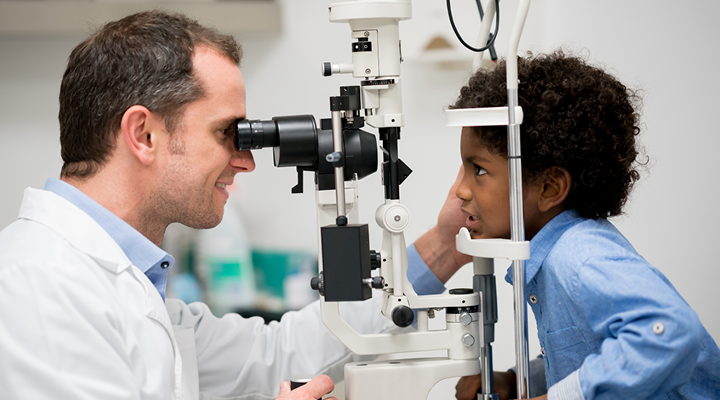
You know to visit the dentist twice a year for preventive check-ups, but did you know that annual vision exams are equally as important? Eye exams are essential for children because they can help identify or prevent underlying vision issues before they become worse. By visiting the eye doctor each year, they can document the vision health of your children to determine if any changes occur over time.
In addition, regular exams can reveal early warning signs of more serious overall health conditions. An optometrist, or vision doctor, can detect signs of hypertension, cardiovascular disease, and even diabetes. They also check for things like cataracts, glaucoma, macular degeneration, and sight deficiencies.
- Myopia, commonly known as nearsightedness.
- Hyperopia, commonly known as farsightedness.
- Amblyopia, commonly known as lazy eye.
- Strabismus, commonly known as wall-eyed.
How Do Eye Doctors Discover Underlying Vision Issues?
Vision isn’t just seeing 20/20. To be successful in school, a child needs strong eye-focusing ability, hand-eye coordination, and mire. Click here for a complete list of vision skills needed for reading and learning from the American Optometric Association (AOA).
Signs that your child is suffering from vision problems include:
- Complaints of discomfort, headaches, or tiredness.
- Frequent eye rubbing or blinking.
- Short attention span.
- Avoidance of reading, homework, or other close activities.
- Covering one eye or tilting the head to see better.
- Holding reading materials close to the face.
- Eye turning in or out.
- Seeing double.
- Losing place when reading.
- Difficulty remembering what was read.
The most comprehensive way to check your child’s eye health is to have a dilated eye exam. This involves the use of eye drops that expand the pupil to help the doctor to get a complete look inside each eye.
A variety of tests are performed during this exam, including a vision test, a periphery test, a muscle test, a response test, a pressure test, and even a dilation test.
What Else Do They Check?
Eye exams also serve as an opportunity to see exactly how well—or not—your child can see. It’s common for someone to think they have perfect eyesight right up until they get a pair of glasses or contact lenses. Getting into a vision doctor early can help spare time spent squinting and struggling to see.
How Often Should My Kid’s Eyesight Get Checked?
According to the Center for Disease Control, kids should be checked once between birth and three months of age, once between six months and one year of age, around age three, and at five years old. From there, an annual visit is recommended.
If you suspect a vision injury or potential loss of eyesight, or your child complains about blurred vision, visit your provider as soon as possible.
Do You Offer Benefits for Vision Services?
Delta Dental of New Mexico offers Individual Vision Plans. These plans cover exams, frames, contact lenses, and even laser correction procedures, as well as discounts on lenses, at participating providers.
Find a Vision provider today.
Curious about eye health? Check out this blog for more information.
